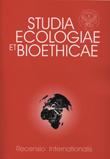Wpływ stopnia izolacji kęp olsowych na aktywność i różnorodność epigeicznych bezkręgowców
The impact of isolation degree of the alder tussocks on activity and diversity of the epigeic invertebrates
Author(s): Izabela Olejniczak, Janusz Uchmański, Paweł BonieckiSubject(s): Essay|Book Review |Scientific Life
Published by: Wydawnictwo Naukowe Uniwersytetu Kardynała Stefana Wyszyńskiego w Warszawie
Keywords: ALDER WOOD; EPIGEIC INVERTEBRATES; ISOLATION
Summary/Abstract: Activity and diversity of epigeic invertebrates were studied in 2004, in alder wood (Alnus glutinosa-Carex elata association). There were chosen: fragment of alder wood and 23 alder tussocks that average surface was 0.27m2. There were installed also 16 artificial tussocks: 4 of them were the same size as natural, and other 12 were smaller, 0,1m2 in size. The average hight of tussockw was 0.4m. Distance between particular tussocks varied from 1 to 2m.Tussocks were placed 3, 5, 7, 9 and 11m from the fragment of the alder wood. Material was collected by using pitfall traps. Samples were taken every 7 or 14 days twice in the season: when tussocks were or were not isolated by water. The distance from the alder wood did not influence on activity and diversity of epigeic invertebrates on tussocks. Saprophagous: Isopoda and Collembola and predators: Araneae and Carabidae were the most abundant in the samples.
Journal: Studia Ecologiae et Bioethicae
- Issue Year: 9/2011
- Issue No: 3
- Page Range: 37-46
- Page Count: 10
- Language: Polish

